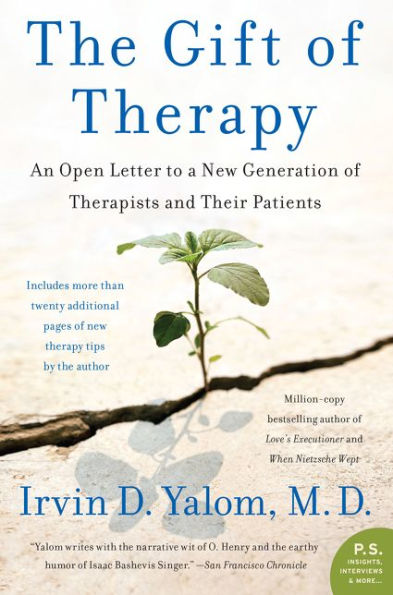Anyone interested in psychotherapy or personal growth will rejoice at the publication of The Gift of Therapy, a masterwork from one of today's most accomplished psychological thinkers.
From his thirty-five years as a practicing psychiatrist and as an award-winning author, Irvin D. Yalom imparts his unique wisdom in The Gift of Therapy. This remarkable guidebook for successful therapy is, as Yalom remarks, "an idiosyncratic mélange of ideas and techniques that I have found useful in my work. These ideas are so personal, opinionated, and occasionally original that the reader is unlikely to encounter them elsewhere. I selected the eighty-five categories in this volume randomly guided by my passion for the task rather than any particular order or system."
At once startlingly profound and irresistibly practical, Yalom's insights will help enrich the therapeutic process for a new generation of patients and counselors.
Anyone interested in psychotherapy or personal growth will rejoice at the publication of The Gift of Therapy, a masterwork from one of today's most accomplished psychological thinkers.
From his thirty-five years as a practicing psychiatrist and as an award-winning author, Irvin D. Yalom imparts his unique wisdom in The Gift of Therapy. This remarkable guidebook for successful therapy is, as Yalom remarks, "an idiosyncratic mélange of ideas and techniques that I have found useful in my work. These ideas are so personal, opinionated, and occasionally original that the reader is unlikely to encounter them elsewhere. I selected the eighty-five categories in this volume randomly guided by my passion for the task rather than any particular order or system."
At once startlingly profound and irresistibly practical, Yalom's insights will help enrich the therapeutic process for a new generation of patients and counselors.

The Gift of Therapy: An Open Letter to a New Generation of Therapists and Their Patients
320
The Gift of Therapy: An Open Letter to a New Generation of Therapists and Their Patients
320Related collections and offers

Product Details
| ISBN-13: | 9780062297266 |
|---|---|
| Publisher: | HarperCollins Publishers |
| Publication date: | 05/21/2013 |
| Sold by: | HARPERCOLLINS |
| Format: | eBook |
| Pages: | 320 |
| Sales rank: | 59,312 |
| File size: | 713 KB |
About the Author
Customer Reviews
Explore More Items
“As a scholar and
Four of the most popular and celebrated books by New York Times bestselling author Deepak Chopra are now available together in this collection.
Buddha is an inspiring re-imagining of the life of a
Our brains are hardwired for worry. While our ancient ancestors had a legitimate use for the fight-or-flight instinct, today what was once a matter of survival has become the stuff of sleepless
Why are many of the most successful people plagued by
Drawing on
We choose a “life script”
Two leading thinkers engage in a landmark conversation about human emotions and the pursuit of psychological fulfillment
At their first meeting, a remarkable bond was sparked between His Holiness the
Kiera Van Gelder's first suicide attempt at the age of twelve marked the onset of her struggles with drug addiction, depression, post-traumatic stress, self-harm, and chaotic romantic
For more than a year,
